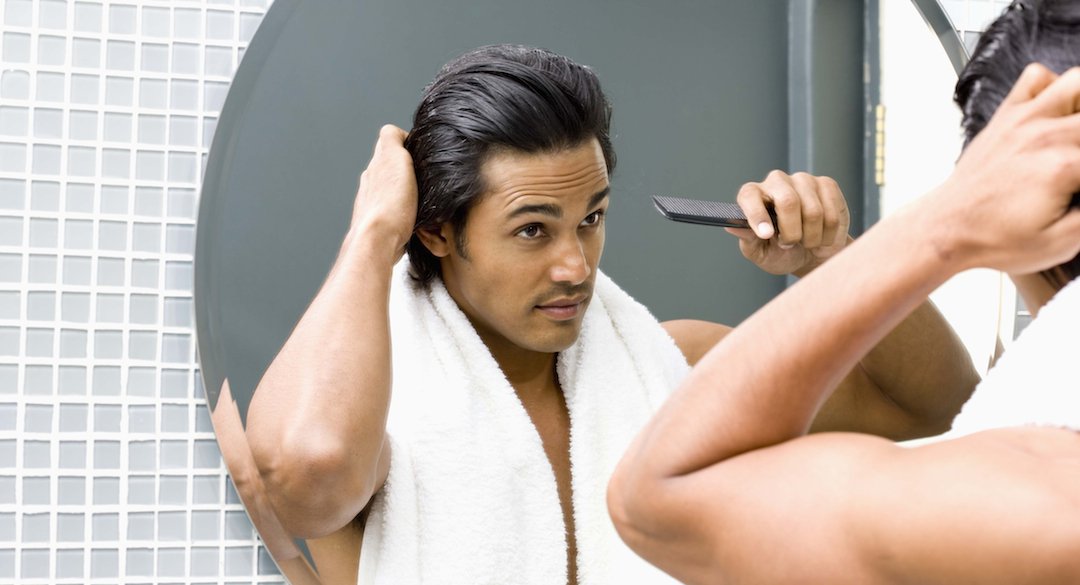Nice Hair! PRP A Promising New Way to Regrow Your Mane

Going bald isn’t the battle it used to be. Thanks to celebrities like Vin Diesel, Jason Statham, and LL Cool J, a hairless head isn’t just acceptable; it’s actually enviable in men of all ages.
But for men who aren’t ready to give up their locks or for women coping with the emotional impact of significant thinning, hair loss treatments including pills, liquids, steroids, and surgery are popular, albeit imperfect options that can cost anywhere between $185 for a 90-day supply of medication to $15,000 for a full transplant procedure. “The search for an effective, minimally invasive and safe treatment for hair loss has been pretty elusive,” says Jason Chirichigno, a One Medical MD in Los Angeles.. Now experts may be a step closer to success thanks to a treatment tool that’s all-natural and easy-to-access: the patient’s own blood.
How can blood help regrow hair?
Researchers are able to regrow hair in balding patients with a series of injections known as Platelet Rich Plasma therapy (PRP). PRP is nothing new, but experts only recently have begun investigating its potential role in hair regrowth. The treatment involves drawing the patient’s blood and spinning it in a centrifuge to separate the plasma from the red and white cells. After adding nutrients like protein, the platelets and growth factors are collected from the sample and injected into the scalp where the hair is thinning. The procedure is non-surgical and requires only local anesthesia.
Sports medicine has used PRP for years to treat injuries to the Achilles tendon, joints and muscles by stimulating stem cells. In the case of hair loss, the injected platelets prompt inactive or newly implanted hair follicles to enter an active growth phase, causing the hair to start growing again.
Who’s a good candidate for PRP?
PRP targets androgenetic alopecia, the hereditary hair thinning that affects both men and women. Experts believe it may also be effective for women with traction alopecia, hair thinning caused by too tight ponytails, braids, and other styles that pull the hair out. According to researchers, the best candidates are people who have only recently begun to lose hair. PRP won’t work for anyone who’s completely bald and it won’t completely regrow all lost hair.
What is the cost and recovery time?
The entire PRP process including the injection takes about 90 minutes and costs $400 or more per session. One treatment per month is recommended for the first four months, and then two maintenance treatments are recommended per year. PRP isn’t covered by insurance, but according to Chirichigno, the price point may make it a more viable option for consumers. Hair transplant surgeries vary widely in price depending on the amount of hair transplanted, but the average cost ranges from $4,000 to $15,000.
“Although it’s not currently covered by insurance, the cost ranges in the hundreds of dollars, not the thousands of dollars associated with invasive surgical procedures,” he says.
PRP is also earning points with providers and interested patients for the low level of risk associated with the treatment. “The injections for hair loss are a simple in-office procedure with no down time,” Chirichigno says. “PRP comes from a person’s own blood, so there are also no real safety issues.”
How well does PRP work?
Clinical studies about the effectiveness of PRP and the longevity of results are inconclusive, mostly due to the fact that there is no standardized procedure and different practitioners use different injection formulas and strategies.
One study involving 11 patients found “a significant reduction in hair loss” between the first injection and the fourth, and saw an increase in the average number of hair follicles per square centimeter of scalp. Another study of 20 patients concluded that PRP “may have a positive therapeutic effect” on male and female pattern hair loss without major side effects, but further investigation is needed to confirm its efficacy.
The US Food and Drug Administration (FDA) hasn’t yet reviewed PRP as a hair loss treatment. But it’s developed a reputation among cosmetic surgeons, sports medicine doctors, and orthopedic doctors as an effective tool.
Is PRP right for you?
If you’re interested in learning more about PRP or any other topical, oral, or surgical hair loss treatment, your best bet is to evaluate your options with your primary care provider. A medical professional can offer guidance and go over the risks and benefits of each method. Until there’s more evidence to support the effectiveness of PRP in hair loss treatment, you may want to discuss other options.
“PRP is promising, but we’re only in the beginning stages of research,” Chirichigno says. “We’ll need more randomized, placebo-controlled trials to truly establish PRP as a safe, minimally invasive, and cost-effective treatment.”
The One Medical blog is published by One Medical, a national, modern primary care practice pairing 24/7 virtual care services with inviting and convenient in-person care at over 100 locations across the U.S. One Medical is on a mission to transform health care for all through a human-centered, technology-powered approach to caring for people at every stage of life.
Any general advice posted on our blog, website, or app is for informational purposes only and is not intended to replace or substitute for any medical or other advice. 1Life Healthcare, Inc. and the One Medical entities make no representations or warranties and expressly disclaim any and all liability concerning any treatment, action by, or effect on any person following the general information offered or provided within or through the blog, website, or app. If you have specific concerns or a situation arises in which you require medical advice, you should consult with an appropriately trained and qualified medical services provider.